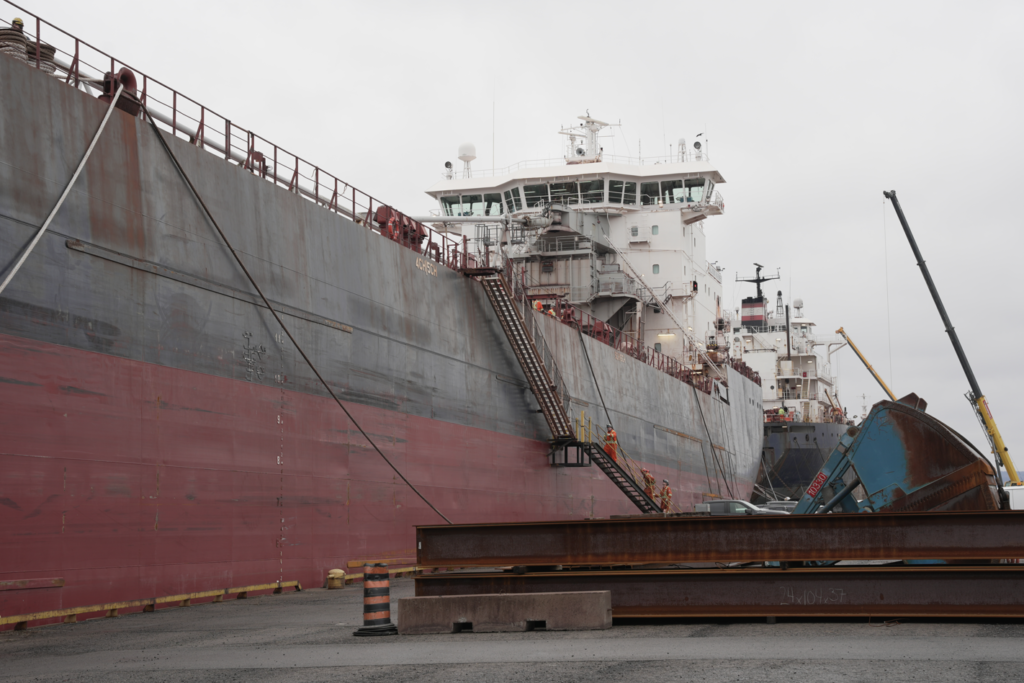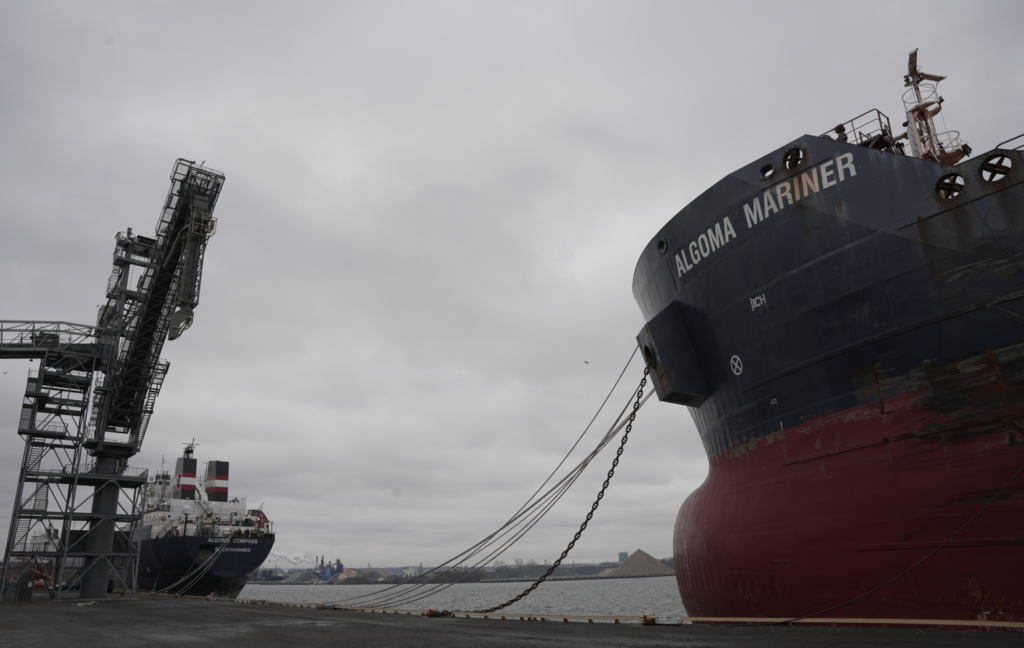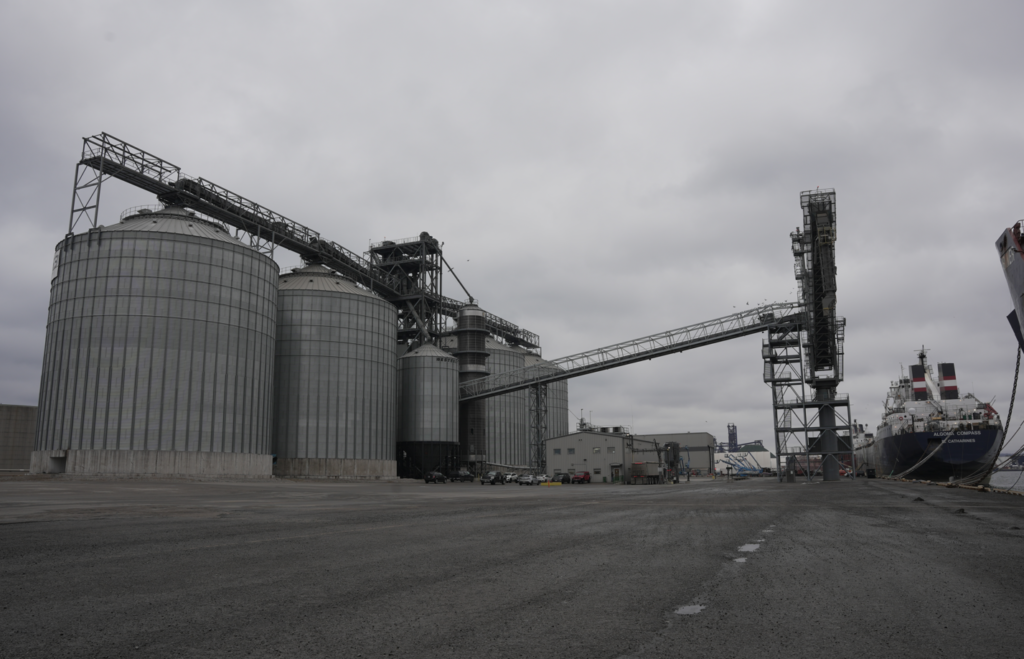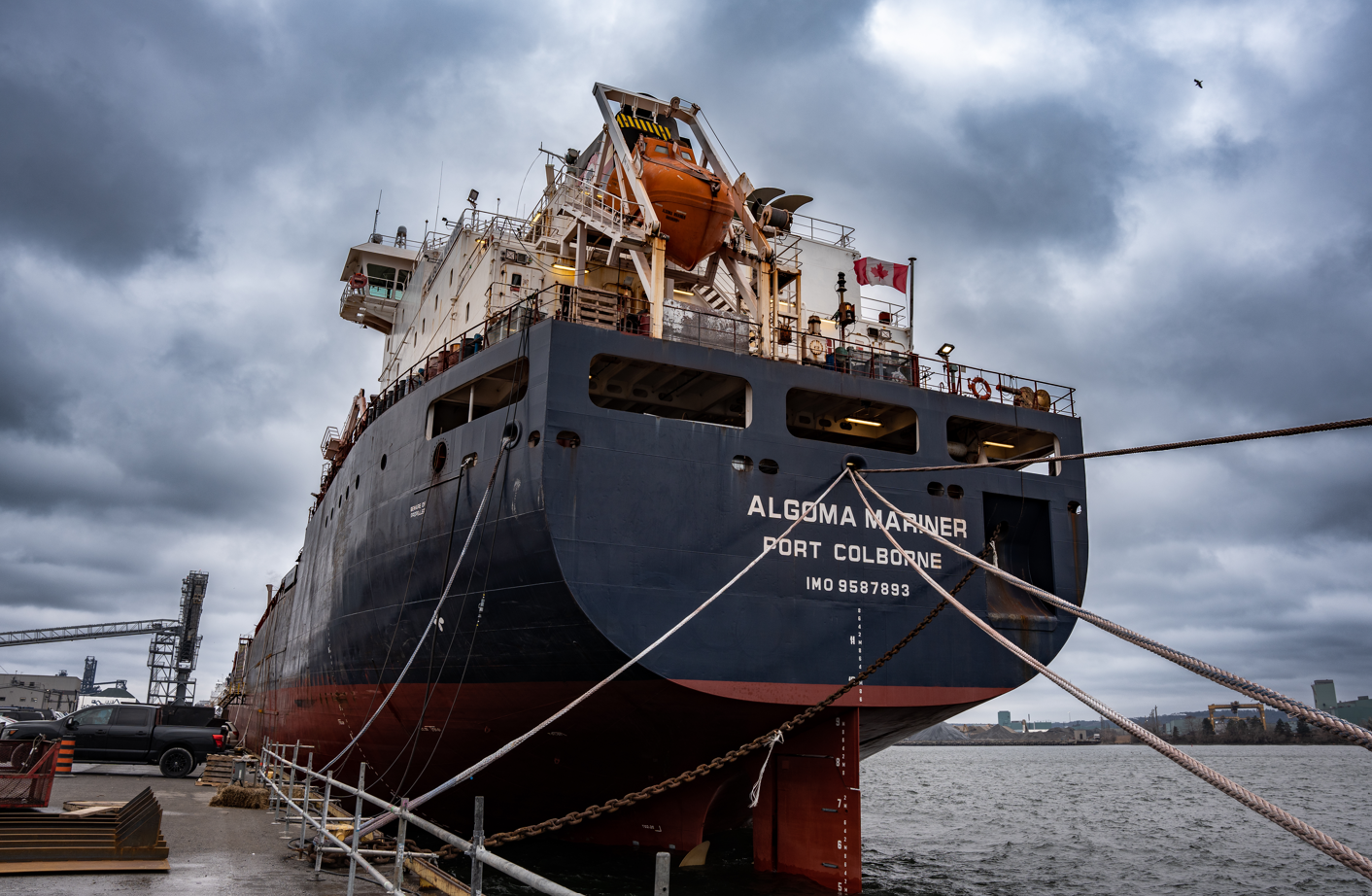WINTER LAY-UP 2022/2023
HAMILTON, ON – During the winter months, shipping activity across the Great Lakes/St Lawrence Seaway takes a pause and the cargo vessels (known as “Lakers”) that normally transit these waterways are laid up, while they wait for the Seaway to reopen.
In between seasons, ships undergo routine maintenance and upgrades while a crew of skeleton staff and shipkeepers make sure nothing goes amiss on the boat. Docked vessels can also be used as storage (kind of like a floating warehouse) for port tenants who need to maintain a steady supply of raw materials like ore, grain or canola for further production in the off-season. Currently in the Port of Hamilton, there are over ten vessels laid up at multiple piers.
If you’ve ever wondered what happens during lay-up season, while marine transportation goes on a brief hiatus, check out what some of our tenants and shipping partners have been up to over the past few months below…
ALGOMA CENTRAL CORPORATION
Algoma is a St. Catharines-based shipping company that moves a variety of bulk cargos around the Great Lakes marine network. Whether it’s shipping iron ore between US and Canadian ports like Hamilton, or moving grain up the Seaway or locally for further processing, Algoma is a key part of Great Lakes shipping and the Hamilton-Niagara Trade Corridor. The company has 5 vessels currently laid up in Hamilton.
Last year during lay-up season, we got to climb aboard the Algoma Harvester with Algoma’s Manager of Environmental Operations, Dalia, over at Eastport for a front row seat to witness its layup upgrades. At the time, the Harvester’s hull was cut in order to install a 3 tonne BOTU-M (Bleed of Treatment Unit Membrane) on deck 3 near the ship’s engine room.
The BOTU-M is a modern, sophisticated piece of their scrubber technology which treat’s the exhaust scrubber’s waste water. The waste water, which captured the SOx produced by the ship’s engines, is processed through porous tubes separating substances, such as PAH’s, nitrates, nitrites and heavy metals. This produces clean and safe water for discharge. With the evolution of computer and water treatment technology, Algoma made the decision to update its equipment to ensure sustainability and reliability for years to come.
At Pier 10, we were also able to meet the crew aboard the Algoma Conveyor, which was unloading canola seed into a storage facility for future use. Meanwhile, Francois, Chief Engineer, was overseeing various repairs to the ship over the off-season.
OCEAN GROUP
According to Ed O’Connor, Ocean Group’s Director of Towing Operations, the tugs that normally guide cargo vessels into docking position at the Port of Hamilton have their own winter routine. “Like the cargo vessels, the tugs have their own 4-5-year inspection and repair cycles to undergo,” said Ed.
While shipping season necessitates a 24-hour schedule for the crew, the winter gives Ocean’s Hamilton team a bit more breathing room and a more typical 8-hour workday. “As the season approaches, we bring the entire navigational crew back for a complete refamiliarization education and updated health and safety training. We also run drills to make sure the team is up to date on the latest best practices and ready for the season ahead.”
HEDDLE SHIPYARDS
Heddle Shipyards is a massive drydock and shipyard operation, located at the base of Hillyard Street in Hamilton. For this port partner, the close of the Seaway signals the start of their busiest season, in which vessels, tugs and barges head into drydock for maintenance, repairs, and massive structural repairs. Heddle employs between 125-150 staff at their Hamilton yard, including mechanics, welders, pipe fitters, etc. The company also owns and operates shipyards in Port Weller and Thunder Bay. Heddle is looking to advance into Canada’s national ship building program, which would bring new employment and economic development opportunities to Ontario.
If you want to learn first-hand about ship repair, check out the free, online introduction to the ship repair program on now at City School by Mohawk:
https://www.mohawkcollege.ca/programs/get-prepared-for-college/city-school-by-mohawk/city-school-courses/introduction-to-ship
This 6-week program will form the precursor to a hands-on/in-person, 12-week program later this spring/summer. If you’re looking to get into the trades, this may be the opportunity for you!
SHORE POWER
What is shore power and why is it important? Shore power provides shoreside electricity to vessels at berth. It is an effective way for ship operators to reduce air emissions during winter layup. When a ship is docked at port, it still needs to operate the lights and the heat. Normally, a vessel uses power from its diesel-fueled engines. By switching to shore power, the diesel engines are turned off and the ship is connected to the local power grid. This improves air quality while meeting the vessel’s power requirements.
Shore power has been available at the Hamilton-Oshawa Port Authority for decades.
HOPA PORTS
At ports across the Great Lakes, even when ships are laid up for the winter, the marine sector sustains well-paying, skilled jobs by involving equipment suppliers, repair businesses, shipyards, manufacturing, and many other port tenants.
Now that 2022 has come to a close, we reflect back on the accomplishments we made this past year. While the 2022 tonnage report shows retreats from the 2021 high point rebound from previous COVID-19 impact, there are quite a few wins we are proud of. With imports and exports including Coke, Gen Cargo, Gypsum, and Petroleum Products, HOPA Ports is proud of the consistent increases made. Coke imports beat the 2021 high by 13.6%; Gen Cargo increased by 413.6%; Gypsum increased by 15.2%, and lastly, Petroleum products increased by almost 30%.
We look forward to getting back on the water in the Spring!





